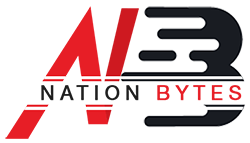Entrepreneurship in the Digital Age: Real Advice That Works in 2025
By 2025, entrepreneurship is more accessible and more competitive than ever. Cloud platforms, AI tools, and global talent pools have slashed startup costs. But the fast pace of innovation demands smart strategies, adaptability, and meaningful connections.

Entrepreneurship has entered a new era. In 2025, traditional barriers to starting a business have dramatically lowered, thanks to automation, AI-powered tools, and access to global remote talent. Solo founders and small teams can now scale faster, more efficiently, and cost-effectively than ever before.
This guide provides practical strategies, real-world examples, and actionable steps to help you start and grow your business using no-code tools, AI, and a digital-first approach.
1. Automate and Work Smarter
Automation and AI are no longer optional—they’re critical for scaling efficiently. Here’s how to implement them:
Content & Design:
-
Generate copy with ChatGPT or Jasper.
-
Create visuals with Canva or Figma.
Organization & Project Management:
-
Plan and track tasks using Notion, Trello, or Asana.
Marketing & Engagement:
-
Schedule social media posts using Buffer, Later, or Hootsuite.
Real-World Example (Pakistan):
A university student in Lahore runs a dropshipping business in under three hours per day. Using automated email campaigns and social media scheduling, the entrepreneur scaled revenue to Rs. 50,000/month in six months.
2. Lean Validation: Test, Learn, Pivot
Validation reduces risk and accelerates learning.
Steps to Apply:
-
MVP Launch: Start with a simple website, course, or product.
-
Gather Feedback: Use surveys, comments, or heatmaps (Hotjar) to understand user behavior.
-
Adjust Quickly: Pivot based on feedback; don’t wait for perfection.
Pitfall to Avoid: Waiting until your product is “perfect” before launching. Early testing saves time, money, and effort.
3. Think Digital from Day One
A strong digital presence is essential.
Execution Steps:
-
Mobile-First Design: Ensure websites load quickly; 80% of users shop on mobile.
-
SEO & Content Strategy: Make your brand discoverable where your audience searches.
-
Omnichannel Presence: Sync messaging across social media, newsletters, and communities.
Example: A Karachi-based e-commerce store increased mobile traffic by 30% after optimizing its website and SEO, boosting sales and engagement.
4. Adopt an AI-First Mentality
AI is now central to modern business operations.
How to Start:
-
Build basic chatbots (e.g., ChatGPT plugins).
-
Use AI for code generation, prototyping, and repetitive tasks.
-
Upskill via LinkedIn Learning, Coursera, or YouTube.
Example: An Islamabad SaaS startup implemented AI chatbots for customer support, reducing response times by 60% and increasing satisfaction.
5. Embrace Remote Talent & Outsourcing
Why It Works: Access to global talent markets allows startups to scale affordably.
How to Apply:
-
Hire virtual assistants for admin work.
-
Outsource design, development, or marketing tasks.
-
Use tools like Slack, Zoom, and Notion for collaboration.
Pitfall: Lack of clear deliverables. Effective outsourcing requires precise communication and expectations.
6. Build Community, Not Just Customers
Community-driven growth fosters loyalty and long-term success.
Tactics:
-
Interactive platforms: Discord, Slack, or Facebook groups.
-
Showcase user-generated content (UGC).
-
Host webinars or networking events.
Example: A Lahore-based fitness startup grew its customer base by 150% through an active Facebook group, leveraging community feedback for product development.
7. Measure What Matters
Track key metrics like CAC, conversion rates, and retention—but don’t get lost in data.
Tools: Google Analytics, Shopify Stats, Instagram Insights.
Approach: Focus on actionable insights rather than obsessing over minor metrics. Iterate based on real-world trends.
8. Diversify Revenue Streams
Relying on a single income source is risky.
Options:
-
Coaching/Consulting via Zoom or Calendly.
-
Online courses on Teachable or Kajabi.
-
Affiliate marketing.
-
Digital products like ebooks, templates, or presets.
-
Subscription platforms: Patreon, Substack, etc.
9. Cultivate an Evolving Entrepreneurial Mindset
Core Skills for 2025:
-
Agility & Experimentation: Test quickly and learn.
-
Growth Orientation: Treat failure as a learning opportunity.
-
Emotional Intelligence: Build resilient teams and customer trust.
-
Financial Literacy: Understand cash flow, margins, and forecasting.
-
Delegation: Focus on high-impact work.
10. Foster Entrepreneurial Leadership
Key Traits:
-
Identify opportunities early.
-
Optimize risk without hesitation.
-
Encourage creativity and proactive decision-making.
-
Develop autonomy in team members.
11. Stay Educated and Connected
Continuous learning is essential.
Ways to Grow:
-
Take online courses on Coursera or Udemy.
-
Follow top podcasts, newsletters, and industry leaders.
-
Join communities like IndieHackers or Reddit.
-
Attend virtual workshops or hybrid events.
Action Plan: Your Step-by-Step Guide
Step 1: Define Your Business Idea
-
Identify the problem you’re solving.
-
Specify your target audience.
-
Determine your revenue model.
Step 2: Select No-Code Tools
-
Website builders: Wix or Webflow.
-
eCommerce platforms: Shopify.
-
Marketing automation: Mailchimp, Buffer.
Step 3: Set Clear Goals
-
Customers: Example: 1,000 in six months.
-
Revenue: Example: Rs. 2,000,000 in 12 months.
Step 4: Measure and Optimize
-
Track CAC, conversion rates, and retention.
-
Iterate based on performance data.
Step 5: Build Community
-
Launch interactive online communities.
-
Host live Q&A sessions, webinars, or events.
Conclusion: Your 2025 Playbook for Success
Entrepreneurship in 2025 rewards agility, innovation, and digital fluency. By leveraging automation, AI, no-code tools, remote talent, and community-driven strategies, founders can build profitable, scalable, and future-ready businesses.
The digital economy favors those who move fast, stay authentic, and continuously evolve. With this playbook, you’re ready to take the first step toward meaningful entrepreneurial success.
For more updates , visit Nation bytes

 Ayesha Mir
Ayesha Mir